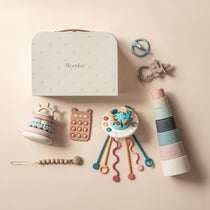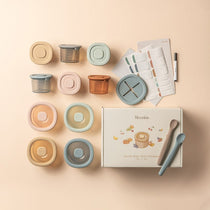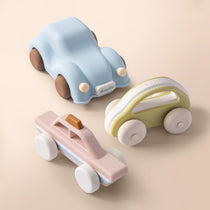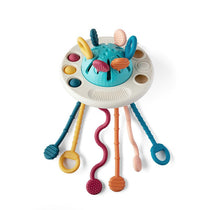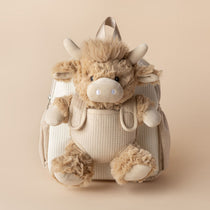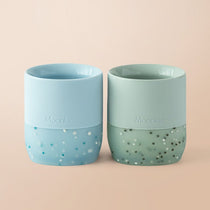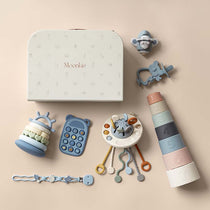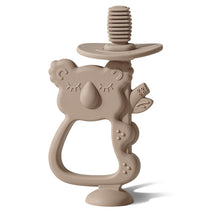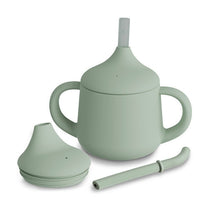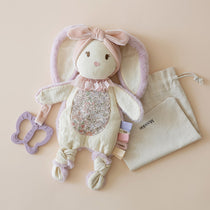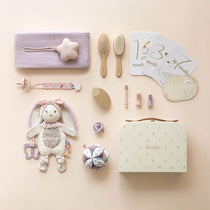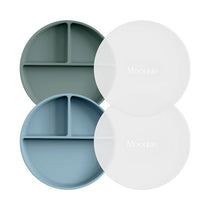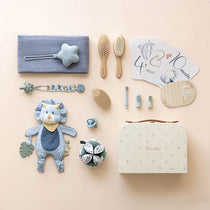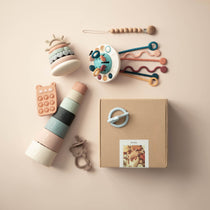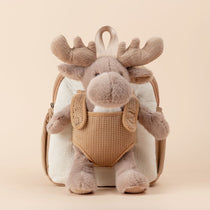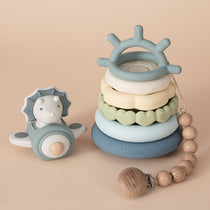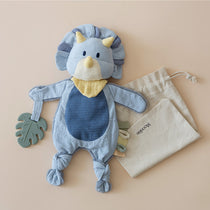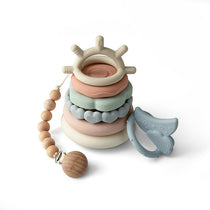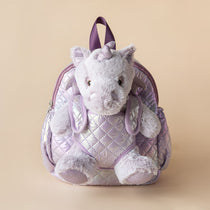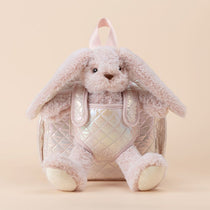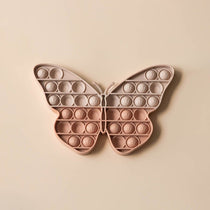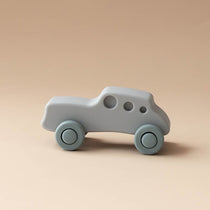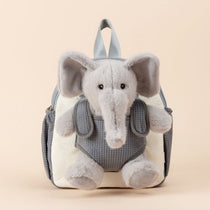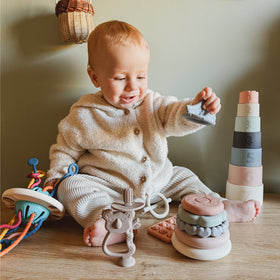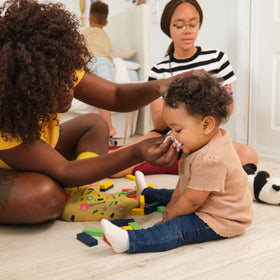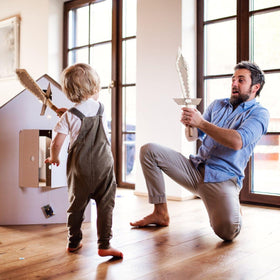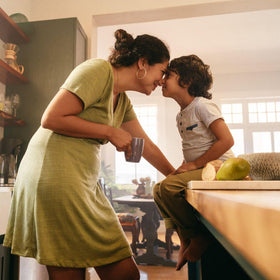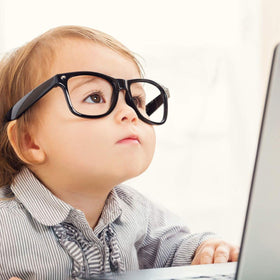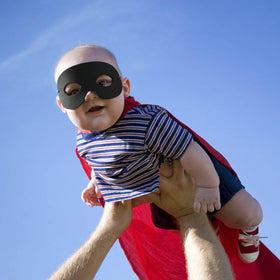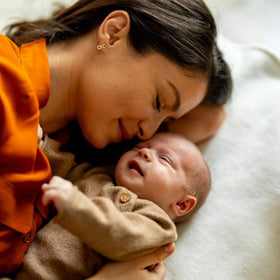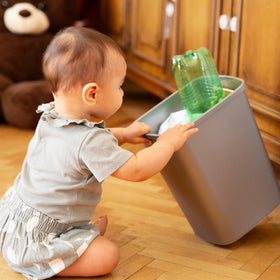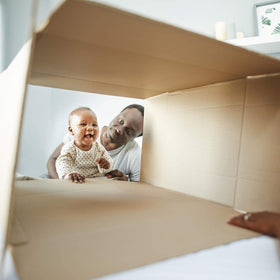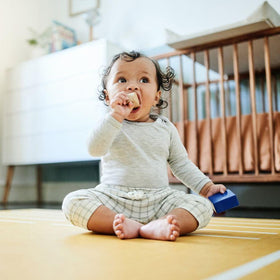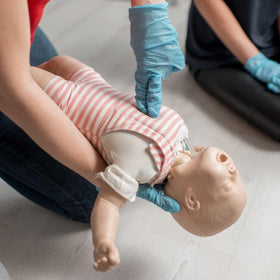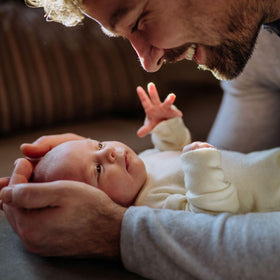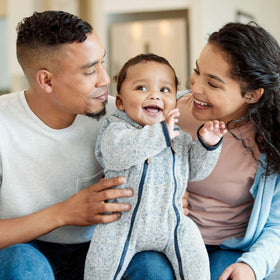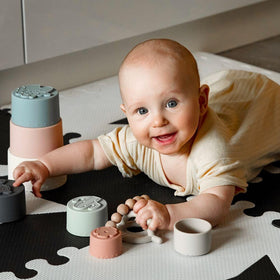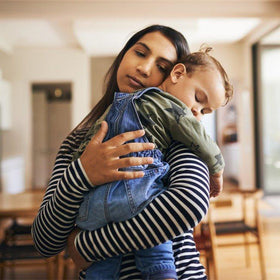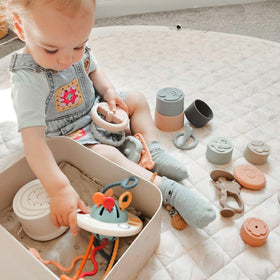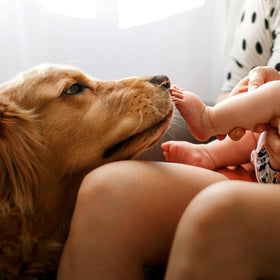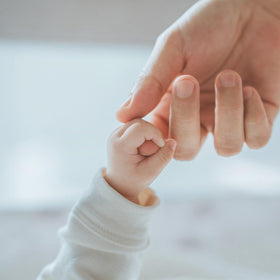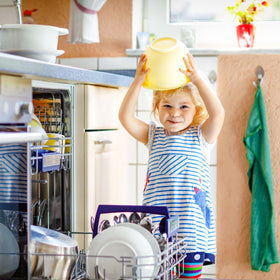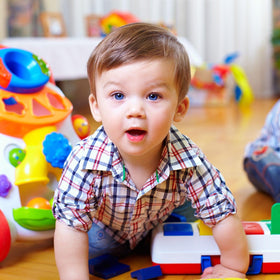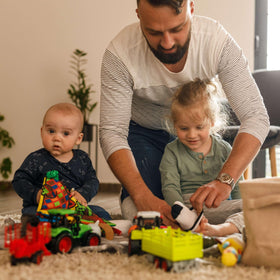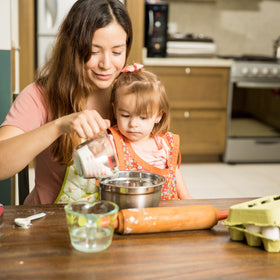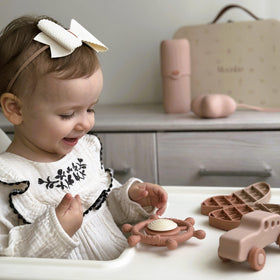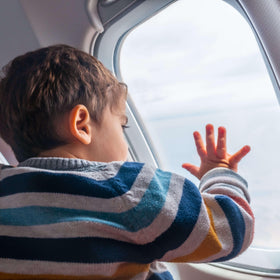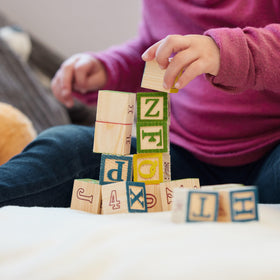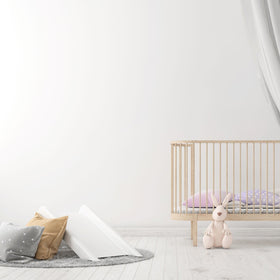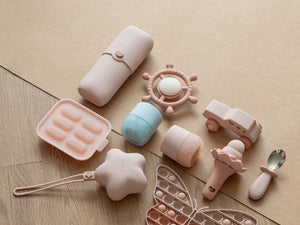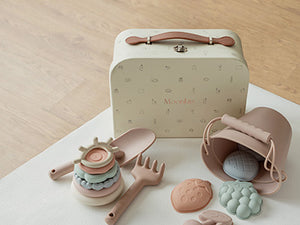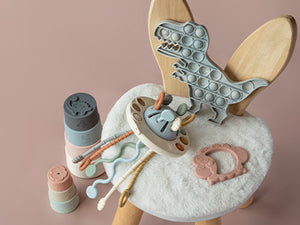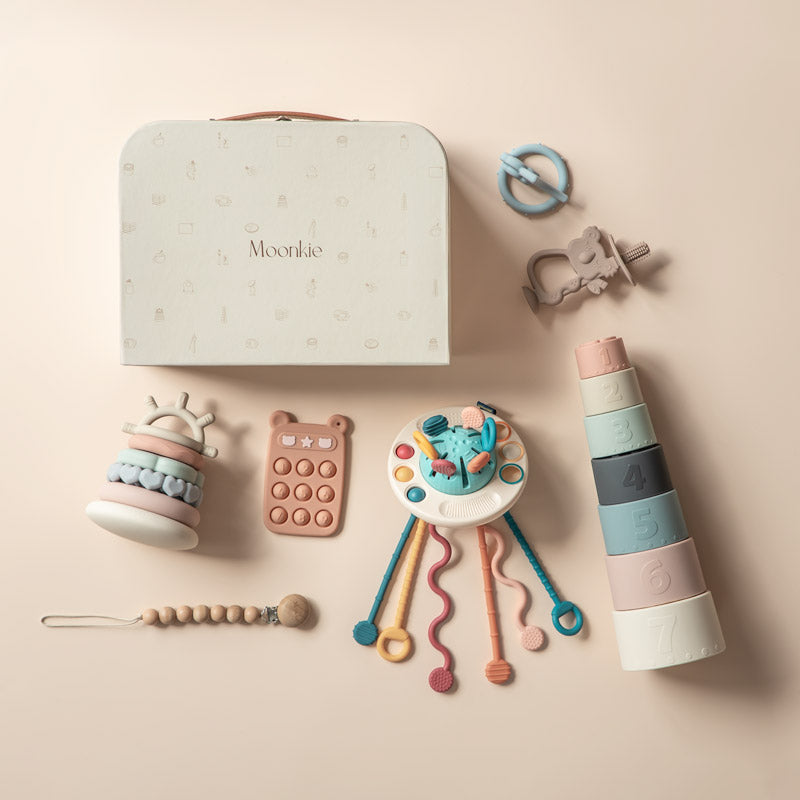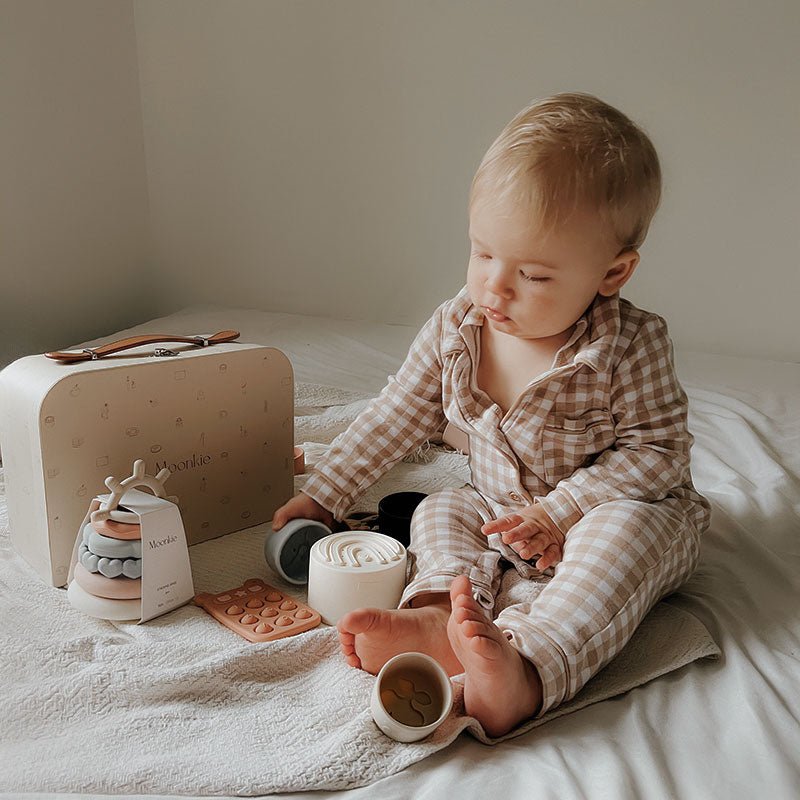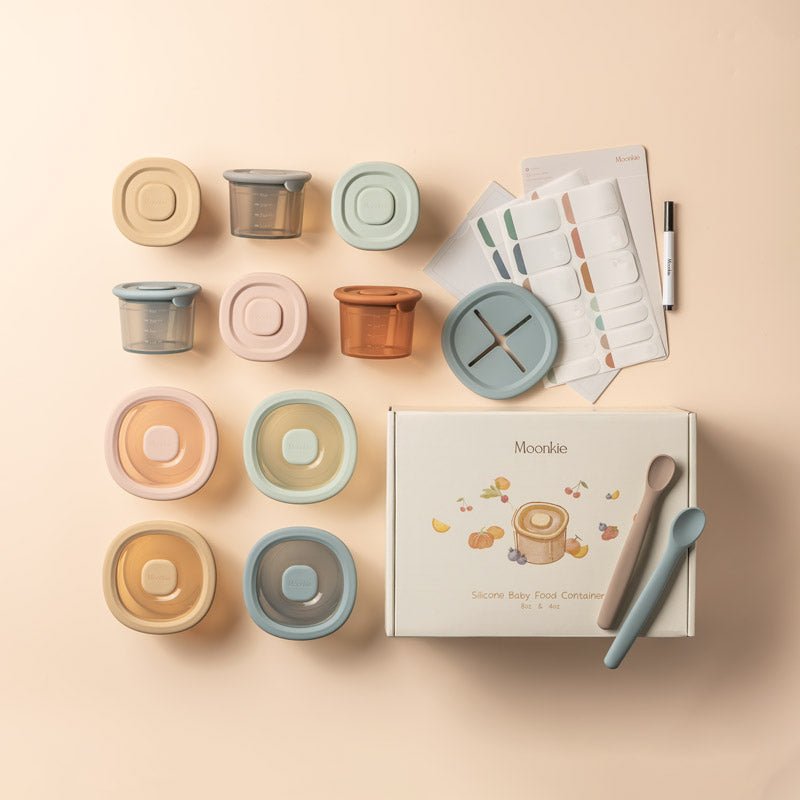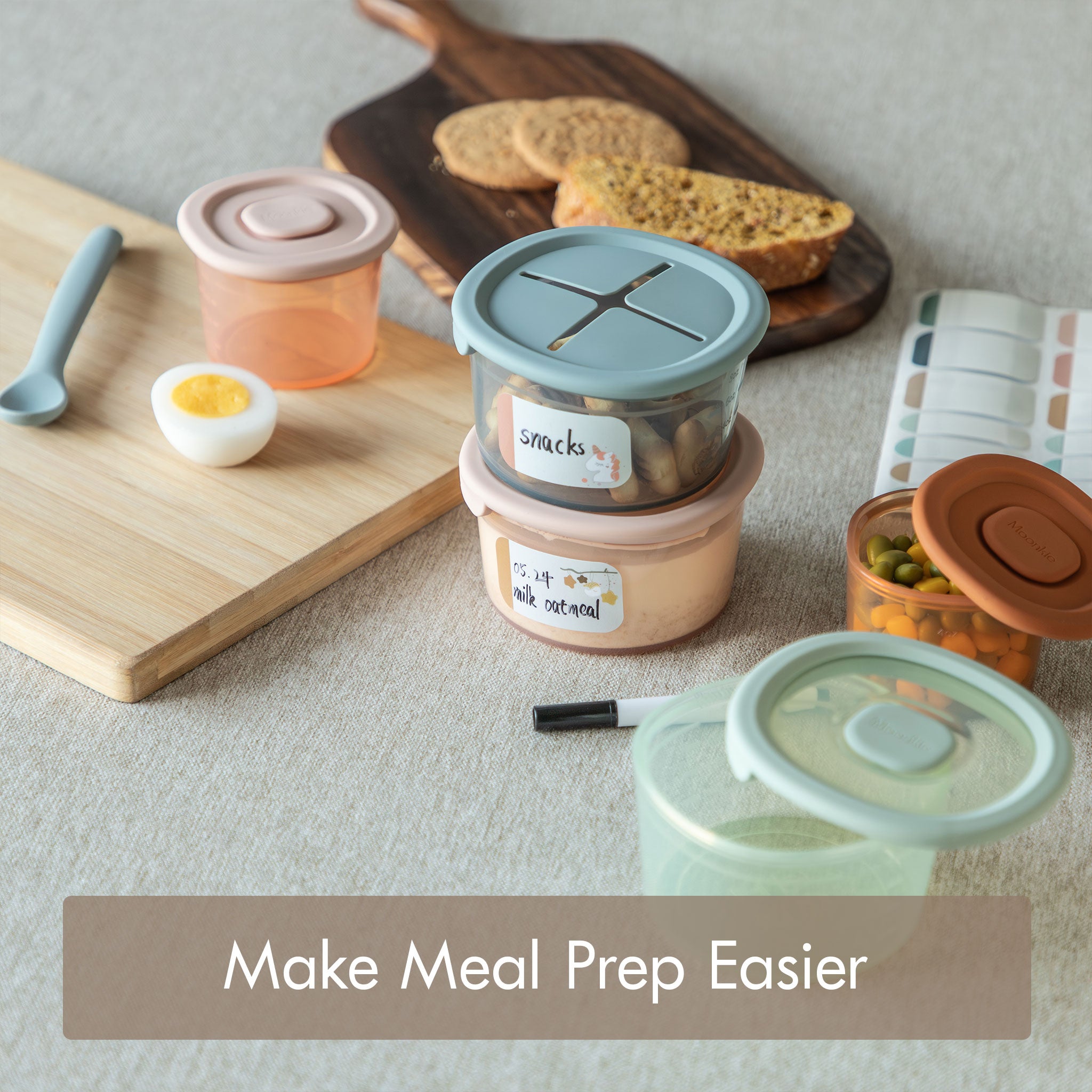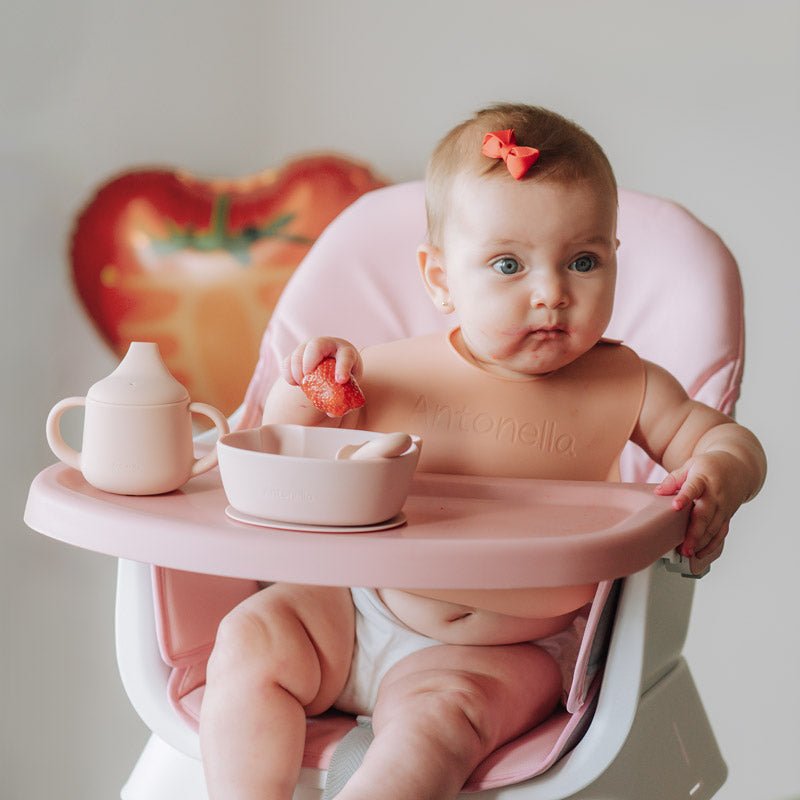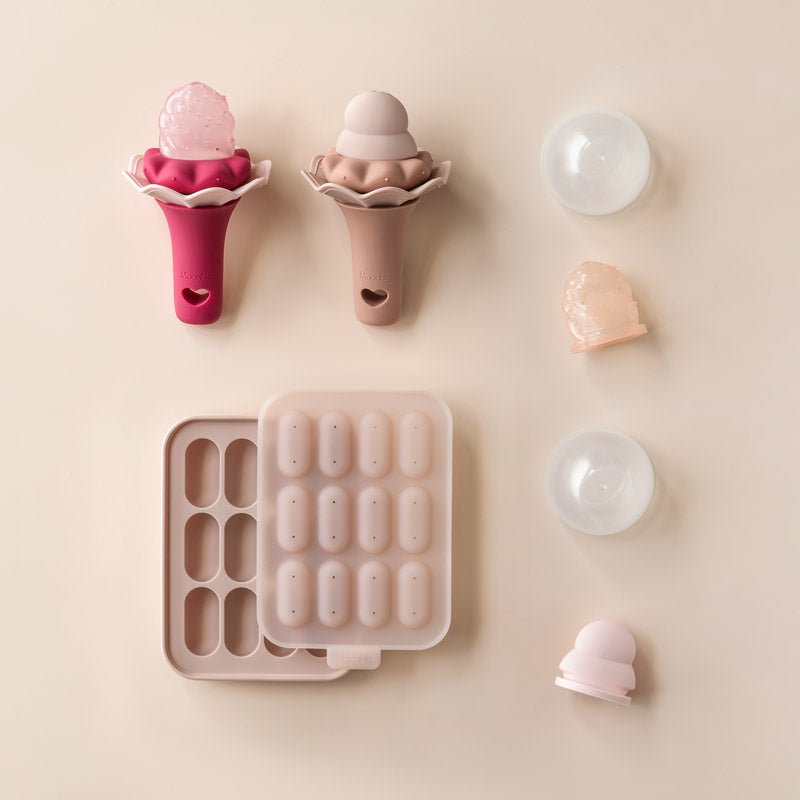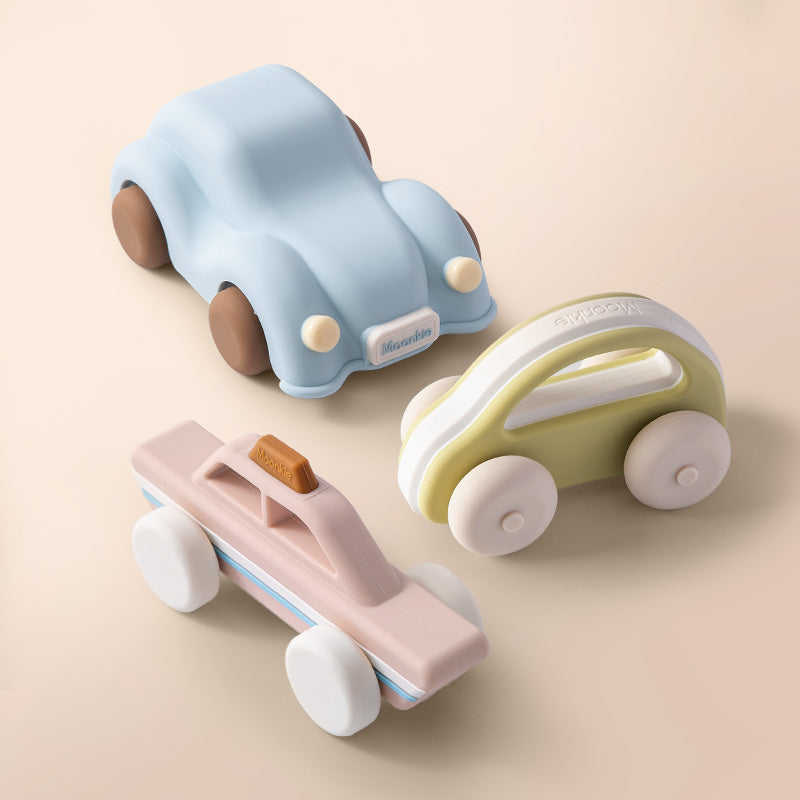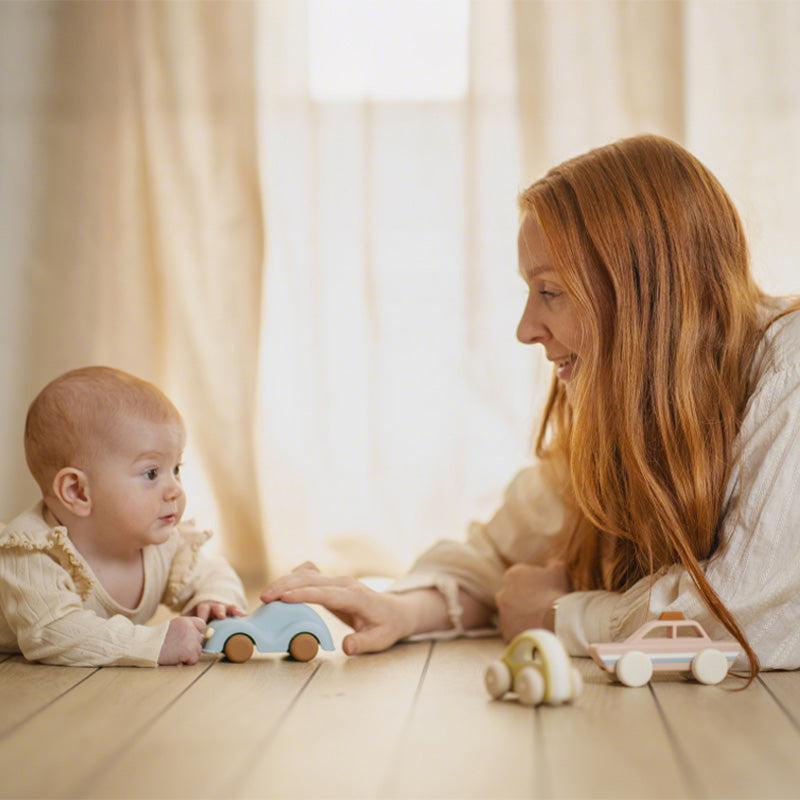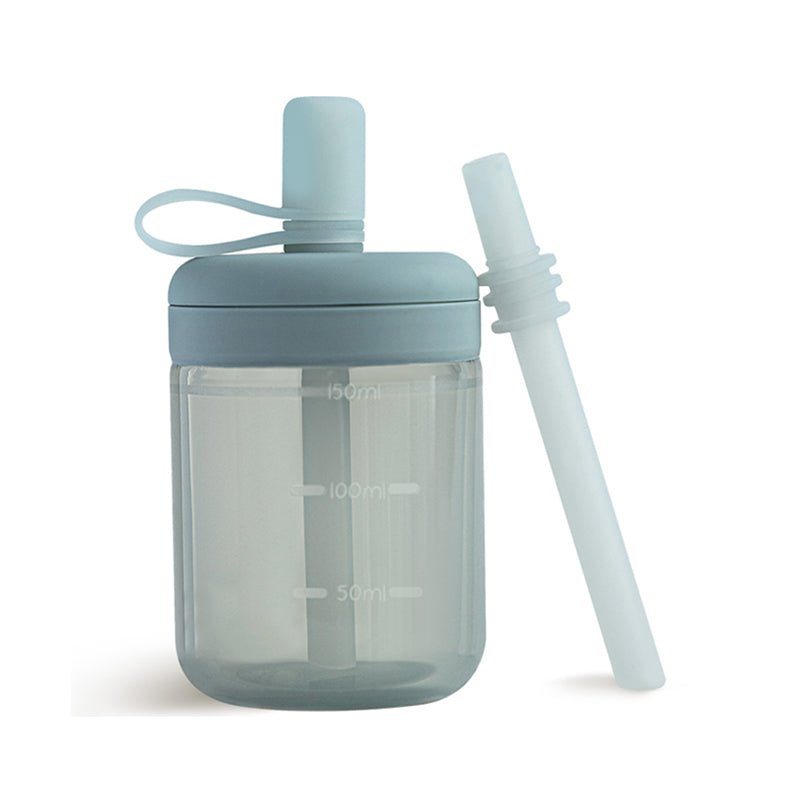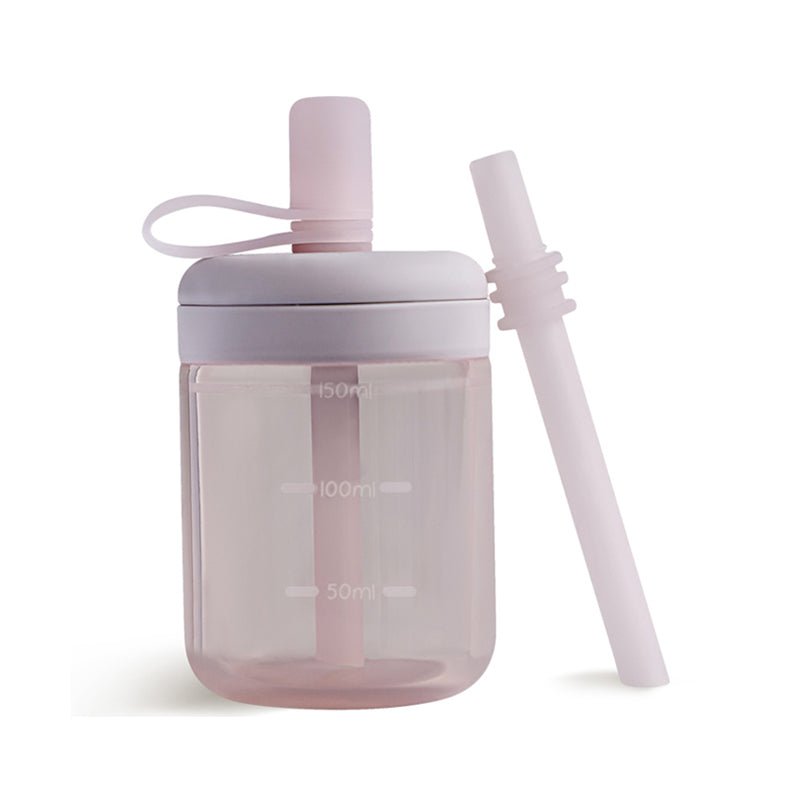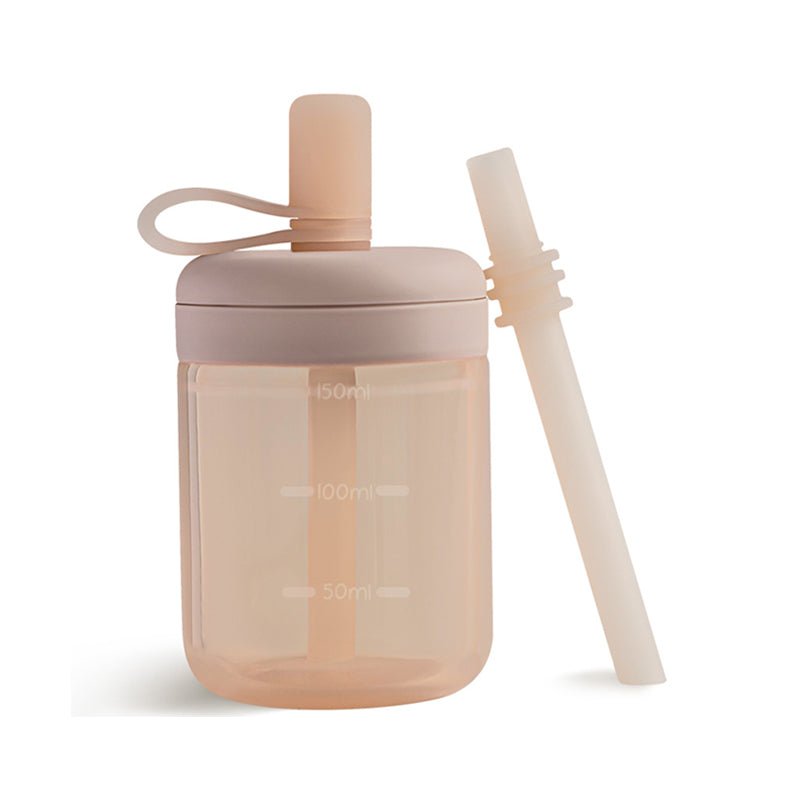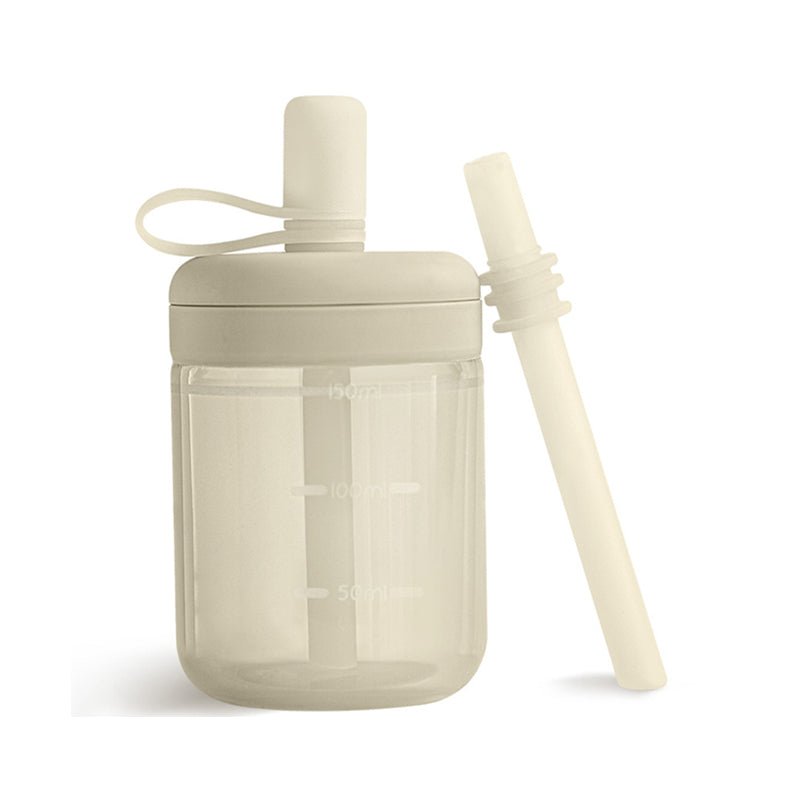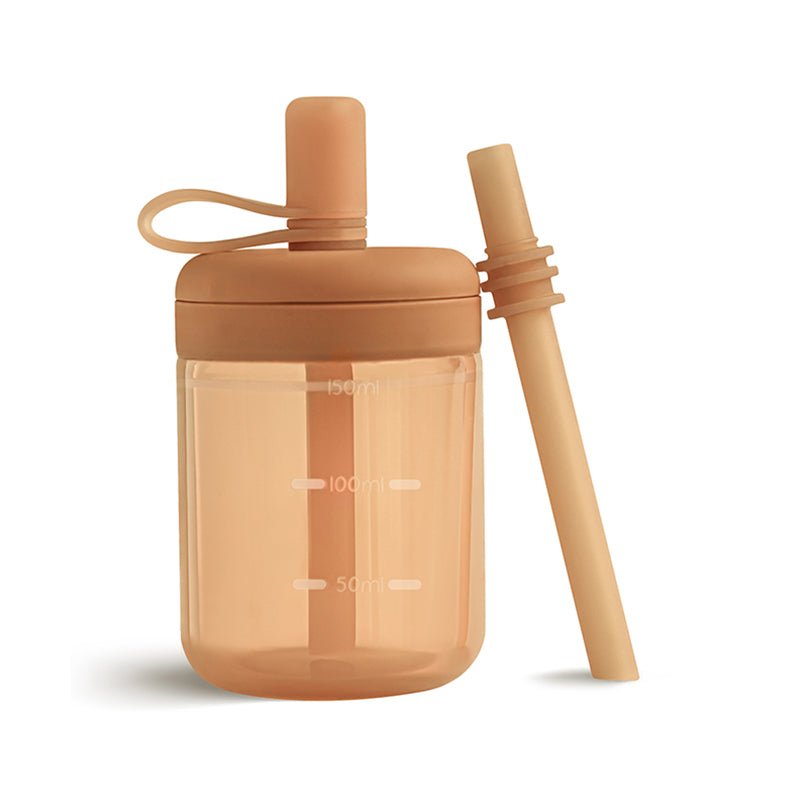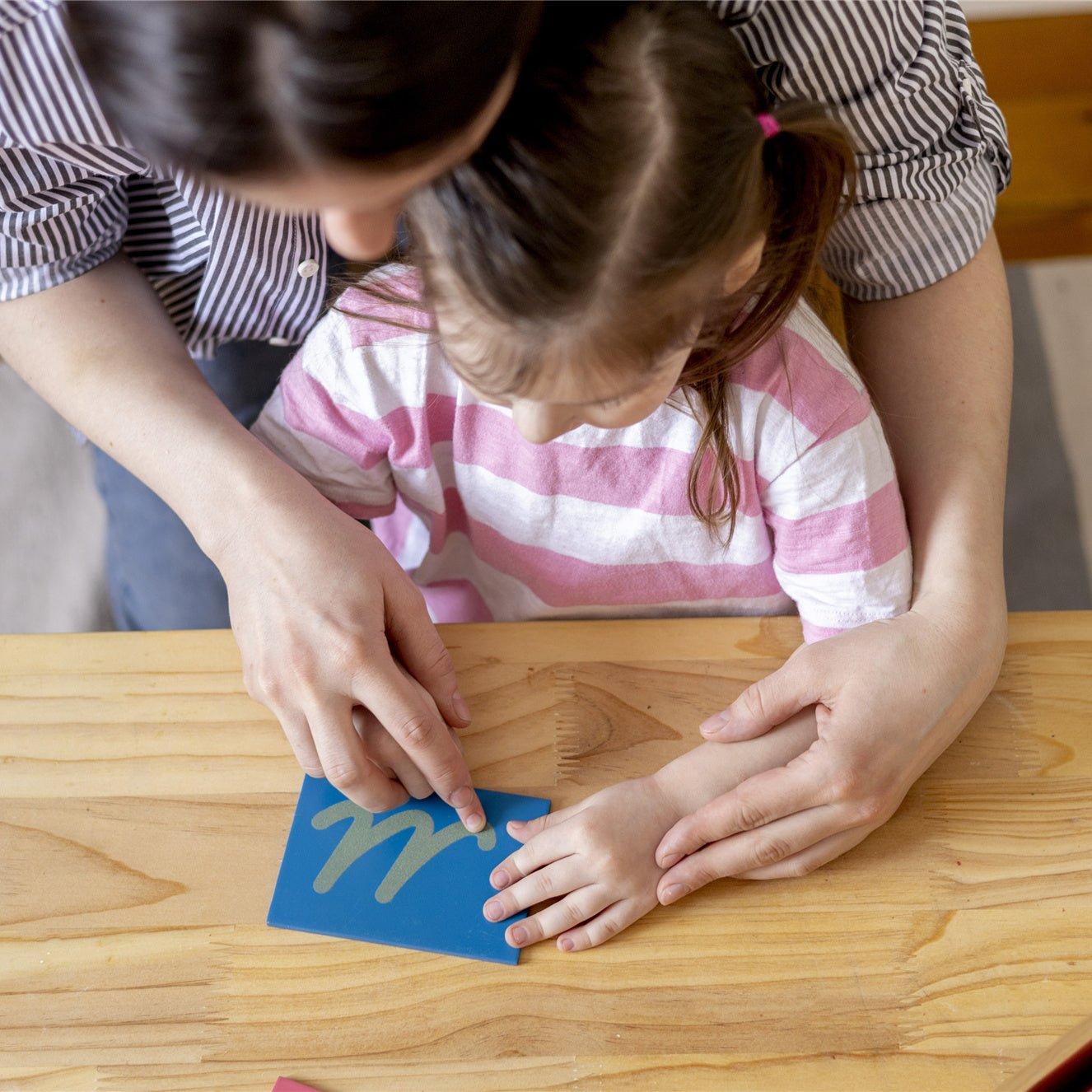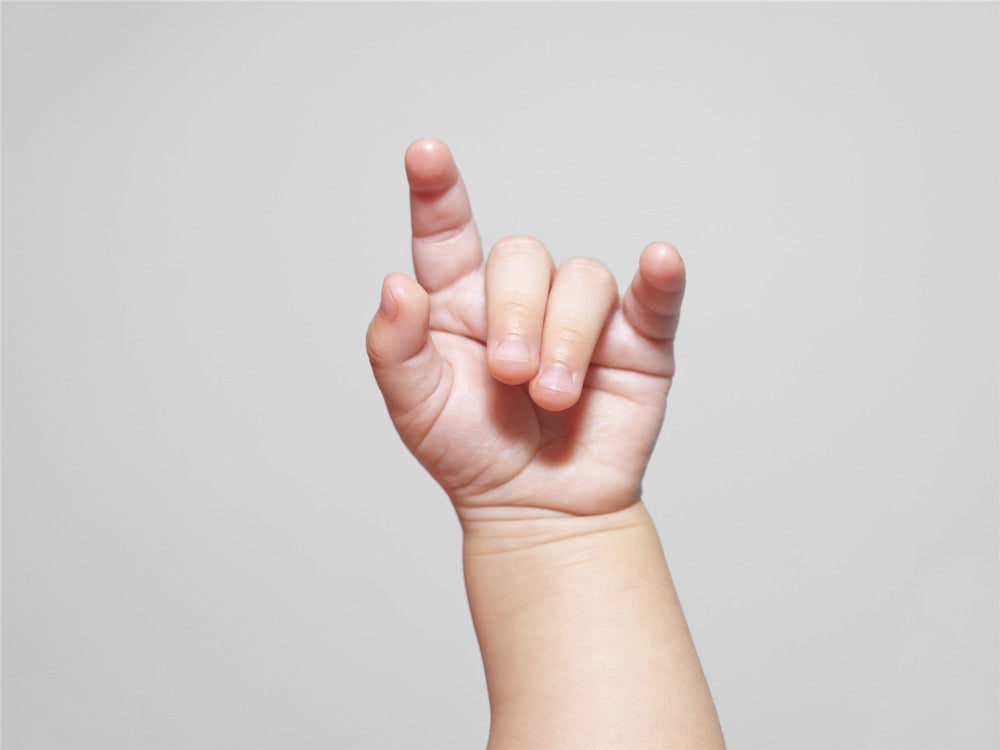
You've probably heard a lot about the importance of language development in babies. But have you ever considered teaching your baby sign language instead of relying solely on verbal language?
Baby sign language has been growing more and more popular in recent years because it improves communication between parents and their little ones. Studies have shown that baby sign language has cognitive and social benefits for babies, including a means to communicate despite feeling big feelings.
This article will take a closer look at the pros and cons of baby sign language and verbal language through babyhood and toddlerhood and provide tips for teaching them to your baby.
How Can Baby Sign Language Benefit My Baby?
Baby sign language can help improve communication between you and your baby, reducing frustration and tantrums. It can also help your baby communicate his needs and wants before he is able to speak. Besides that, baby sign language is just fun!
Babies are able to learn signs around six months of age, which is months before they are expected to speak their first words in their native tongue (source). Though babies won't regularly use signs spontaneously until ten to twelve months old, they will understand them well before that.
Imagine how much fussing could be avoided if your baby showed you what he wanted rather than crying or whining until you handed him the right thing. This smoother communication can relieve your stress a bit and make room for you to be more responsive in your facial expressions and body language.
Speeds Verbal Language Learning
Learning sign language also helps your little one associate signs with tangible objects before he is able to associate spoken names for those same objects (which happens between nine and twelve months for most babies but as early as seven months old for some).
As such, sign language may pave the way for your baby to gain a more extensive vocabulary and better language skills sooner than their peers (source). Furthermore, teaching sign language to babies with hearing impairments can help them develop language skills on par with their hearing peers.
Improves Cognitive and Social Development
Baby sign language encourages babies to think and learn new ways, improving their overall cognitive development. Learning signs, remembering them, and using them for communication are all terrific for a baby's overall development.
Moreover, parents who add simple signs while communicating engage with their baby meaningfully, mixing playfulness and communication. Since you've got to stop what you are doing to sign to your baby, it also sets a precedent for making eye contact and listening to one another, which builds your bond.
Should I Avoid Teaching Verbal Language to My Baby?
No! Baby sign language can improve communication and cognitive development, but it is not a replacement for verbal language. Verbal communication is vital to communicating normally, but it takes a lot of listening and babbling practice for the first two years before your baby will be able to hold a conversation.
Pulling back on speaking clearly to your baby would reduce the quality listening practice crucial to your baby's language acquisition. Instead, speak a lot and support your words with a few simple signs for what your baby needs to communicate most.
If you would like to learn more about the stages of language development and what you can do to give your baby plenty of practice, read From Babbling to Words: A Comprehensive Guide to Baby Language Development.
Will I Confuse My Baby By Speaking and Signing At the Same Time?
No, you will not confuse your baby by using both simultaneously. Your baby has been studying your facial expressions and body language since birth, so he will not be thrown off by sign language.
It may actually help your baby understand you better because you will use a sign for everyday objects instead of always pointing. For example, asking, "Do you want water?" and pointing to your baby's sippy cup across the room is not as straightforward as asking the same question while signing "water bottle."
Will Teaching My Baby Sign Language Delay Their Early Speech Development?
Not at all! Research has found that sign training facilitates speech development, not hinders it (source). Humans are communicative by nature, so when you encourage your baby to communicate from a young age, you open up a world of connection possibilities.
As seasoned parents know, once a little one starts talking, whether verbally or nonverbally, she doesn't stop! I taught a couple of dozen signs to my babies. By the time they were ten months old, they each used several of them, which was a lifesaver when they were upset about being hungry or thirsty!
If I asked, "What's wrong?" it was too open of a question to answer. But if I said, "Do you want water?" or "Do you want a snack?" they each could sign "water" or "snack" to confirm what they wanted. By their first birthday, each of my kids was saying a word along with their signs to emphasize what they wanted. How neat!
Playing with your little one is a fantastic way to encourage both verbal and nonverbal communication. Read The Importance of Play in Language Development: Best Activities for Babies for ideas on games to play in that first year.
How Do I Teach My Baby Sign Language?
Teaching your baby sign language is not rocket science; it's a game of monkey see, monkey do. You start by building simple signs into how you communicate with your baby and others in your household. Use the same signs consistently and often.
Though your baby won't be acting on that sign language until after six months of age, you can still familiarize her with signs by using them around her. Eventually, it will click, and your baby will understand your signs before actually beginning to use signs, too!
If your baby is making a sign that you understand but isn't correctly formed, let it slide for now. Getting your baby to communicate is more important than correcting mistakes. Over the next year, your baby may correct herself as she becomes more dexterous.
As for the number of signs to teach, stick to introducing one or two signs at a time, repeat them often, and reward your baby with praise when she uses a new sign.
Don't stop speaking while you sign; you must keep using verbal language alongside sign language to tune your baby's ears to words. Remember, signs will help your baby communicate her needs before her tongue can do so.
10 Signs to Teach Your Baby
The key to which signs to teach your baby is relevancy; each sign must matter to your baby. You can start with functional signs like "milk" or "more," but don't forget to do fun ones that interest your baby.
Fun signs could be "dog" or "cat" if you have pets, "airplane" for a flying game, or the name of a favorite toy. Which fun signs you choose is up to you and your baby's interests, so let's take a look at some baby signs you can use right away.
Milk
"Milk" is a solid word to start with because your baby will get something after signing it. Start teaching it by saying and signing "milk" before feeding, and your baby will eventually start showing you the sign when hungry.

Water
Learning to sign "water" is helpful well beyond the first year. If your toddler can let you know she wants water without having to interrupt your conversation, you will save yourself from hearing a few less "Mom! I want ______!" demands.

More
Teaching your baby "more" gives him a tangible way to signal that he isn't done eating yet. Whether your baby stopped eating because he got distracted or was savoring a bite, being able to say "more" removes the frustration of being unable to communicate that he still wants more to eat.
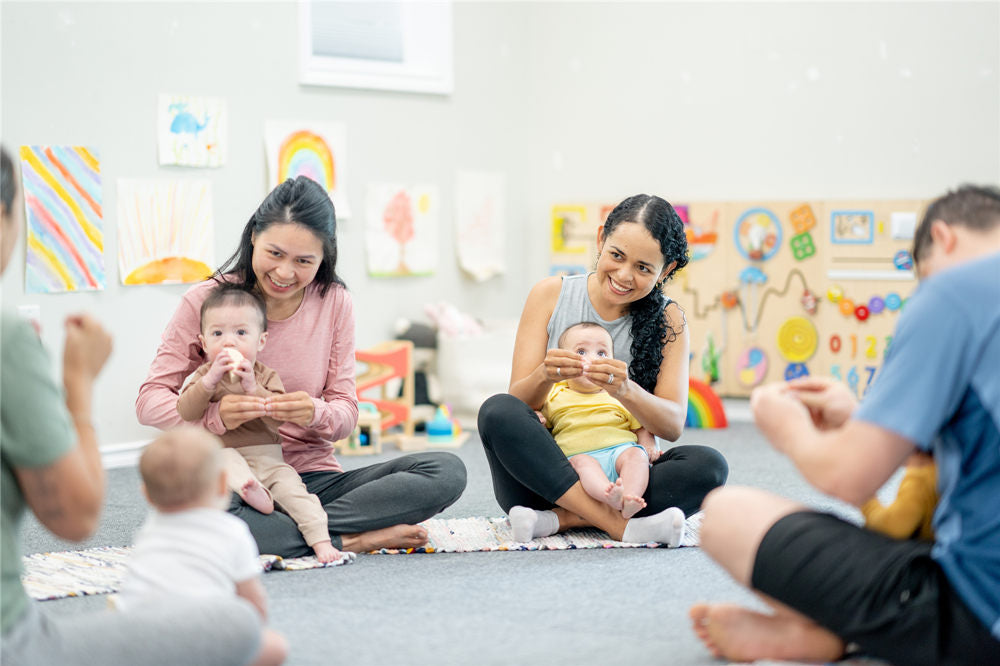
All Done
Likewise, giving your baby a way to say "all done" helps her excuse herself. As parents, we don't always know when our babies have eaten enough, so teaching our littles to tell us when they've had enough is perfect. "All done" works at playtime, during activities, and in overwhelming situations, too!
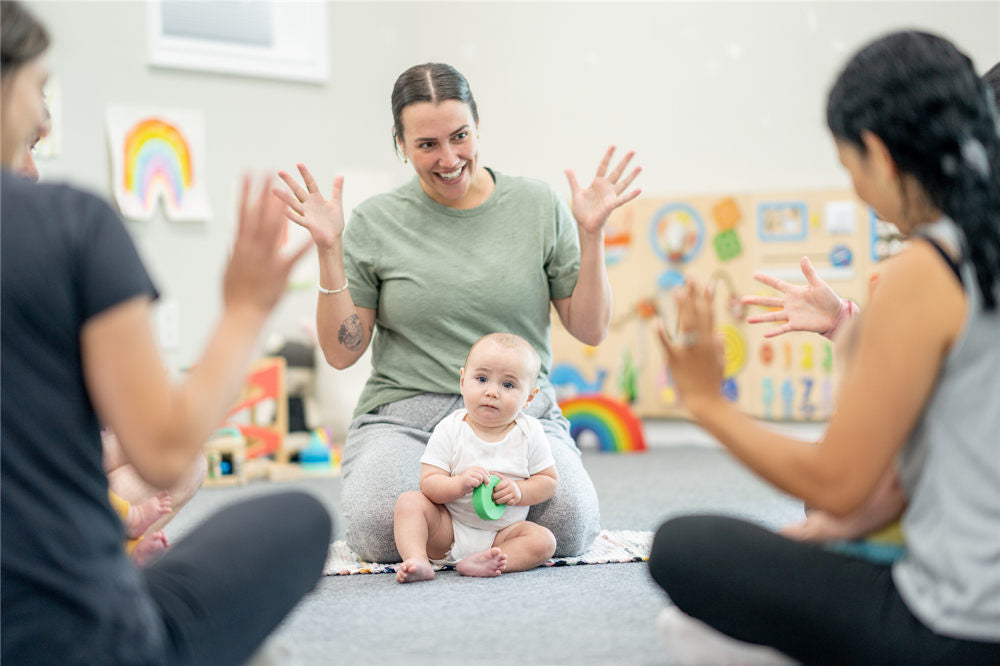
Up
Practically speaking, "up" is helpful for a baby to know when ready to get out of the high chair, feeling insecure and needing comfort, or simply desiring to catch a ride. Even better, it's an easy gesture!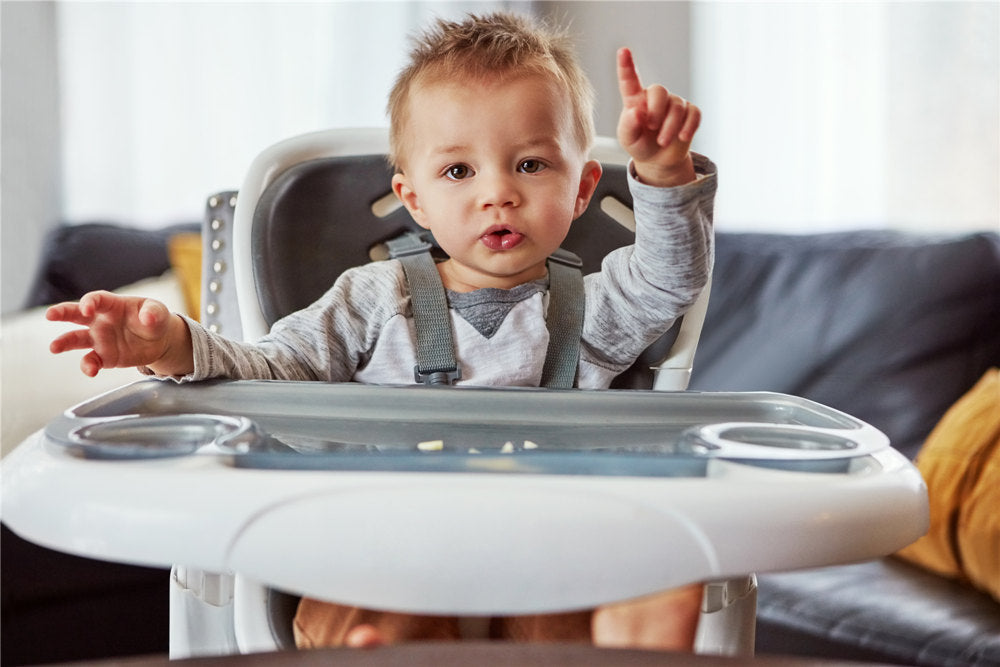
I Love You
"I love you" is not a practical sign, but it benefits your bond with your baby. It will probably be a couple of years before you hear your little one say, "I love you," so seeing him sign that message is a joy for your heart.
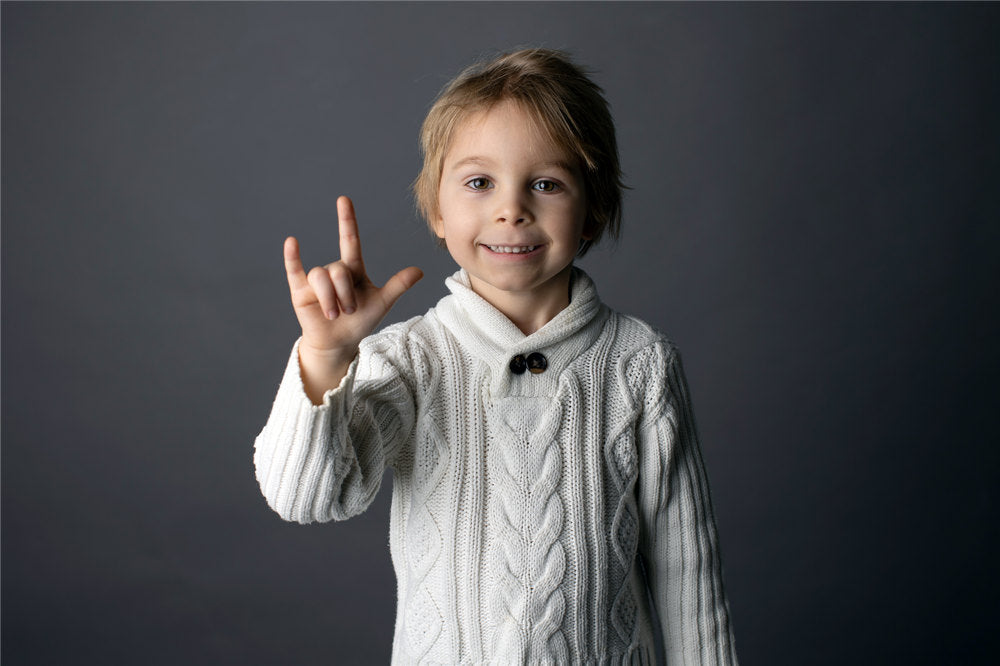
Thank You
Your baby will not likely understand "thank you" in the first year because it doesn't have a tangible meaning. But showing her the sign as you say "thank you" in daily interactions will reinforce a later habit for manners.
 or
or
Please
On the subject of manners, "please" is an easy sign to teach because it often results in a reward! The way parents say "please" to their baby makes it a somewhat easy term for babies to hear.
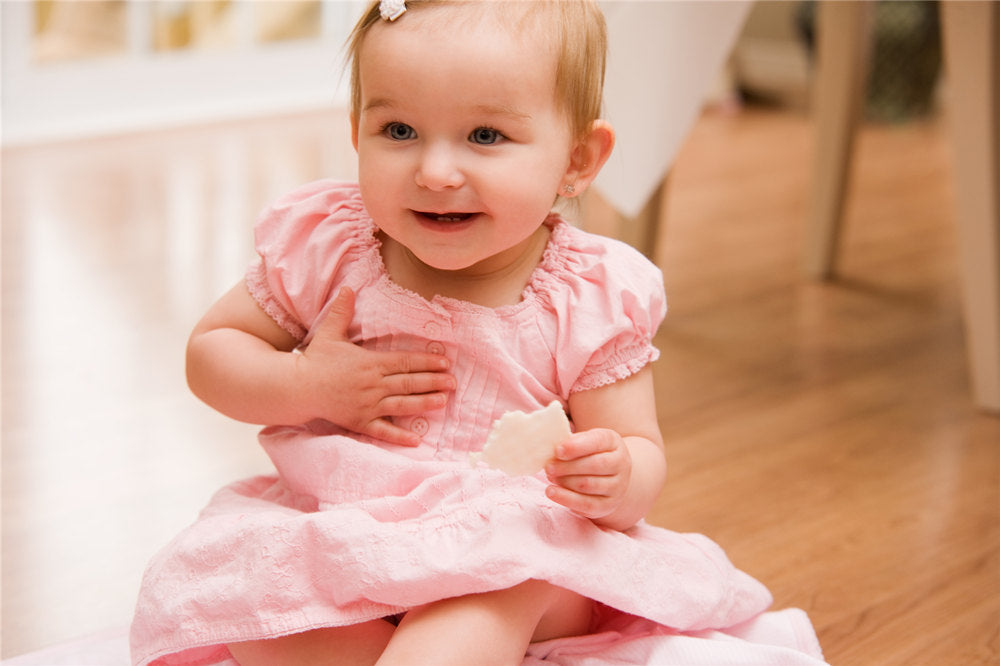
Mother
This one is a no-brainer! Sometimes, babies become worked up about who is holding them and are not satisfied with being passed off to another person. If your baby can signal who she wants, she won't be misunderstood as hungry, thirsty, or cranky.
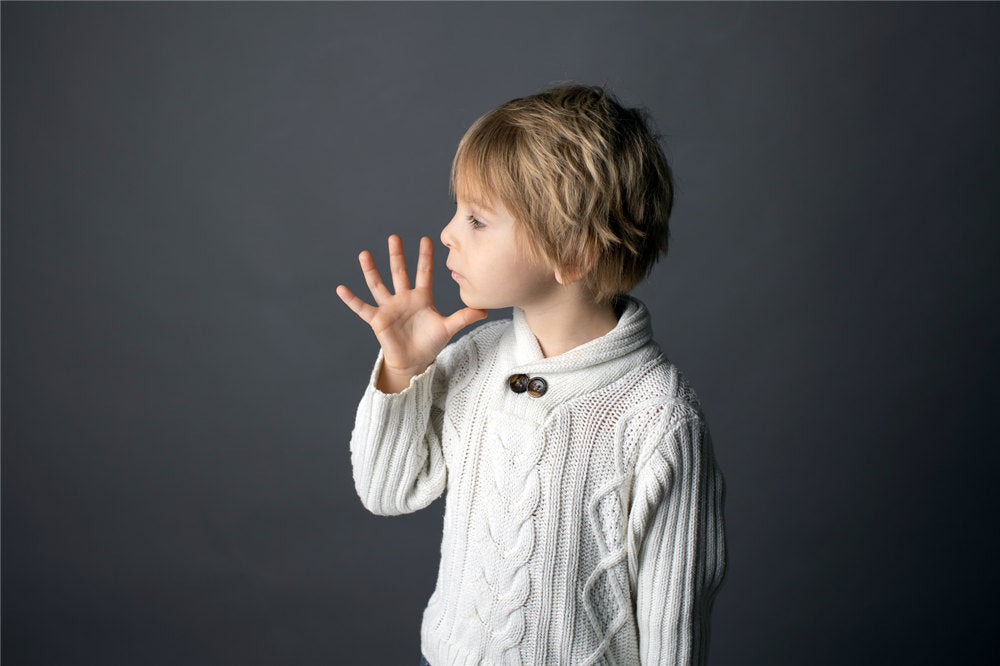
Father
The same goes for dads! If a baby wants his dad, he could sign for him. Even if the answer is, "Dad isn't home yet" or "Daddy is in the bathroom," just knowing what your baby is looking for eliminates potential fussing or confusion.

Should I Teach My Baby ASL as a Second Language?
It's not that you should, but you could! If you want to teach your baby more signs, look up a baby sign language channel on YouTube or visit a website about American Sign Language (ASL) for babies for inspiration and tips. You can even take ASL classes in person or online.
But if your baby and immediate family have no medical reason to learn ASL, learning it would be just like adding a foreign language to your family's skill set. Teaching your child a second language early on has many developmental benefits.
If you don't have the time or headspace for a second language, don't worry about it! Enjoy your family, and do the best with the time and resources you've already got!
Baby Sensory Activities
Babies are little sponges masterfully soaking up everything around them to learn about the world and how it works. They employ all five senses every moment they are awake to explore and discover. As a parent, you can guide your baby to focus on specific things through sensory activities.
A baby sensory activity is designed to stimulate one or two senses so the baby can fully explore something. For example, a simple play mat equipped with an arch sporting a few dangling baby toys is a tummy-time sensory toy that you can turn into a sight activity (move the toys, swat at them, make them dance).
If you choose to teach your baby to sign, sensory activities are an excellent opportunity to practice "please," "thank you," "more," and "all done." You can expand to include "yes" and "no," too!
Sensory activities for babies six to twelve months old that would be perfect for using sign language include:
working together to sort colored blocks into bins of matching colors
driving cars in a shallow bin with uncooked rice
putting a big spoon and cup in a bin with cooked veggie favorites (peas and carrots)
Do you have preschoolers to entertain? Try some of these ideas: 7 Unique Preschool Sensory Activities for Homeschool.
In a Nutshell
Baby sign language is a valuable tool that can help you communicate with your baby, improve her cognitive and social development, and reduce some fussing and stress from guessing what your baby wants.

